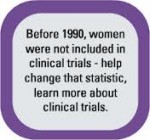 Since the mid-19th century, researchers claimed they could identify the sex of an indivudual just by examining their disembodied brain. However, a new study out of Tel Aviv University disputes this. Indeed, all brians share characteristics, some more common in males, others more common in females, and other characteristics that are common in both of the sexes. While there are some general tendencies for each sex--for instance, men tend to have a larger amygdala--these differences are quite small and highly influenced by the environment. Essentially, throughout history, scientists have attempted to find the differences between male and female brains, when, in actuality, their similarieis are far greater in number.
Since the mid-19th century, researchers claimed they could identify the sex of an indivudual just by examining their disembodied brain. However, a new study out of Tel Aviv University disputes this. Indeed, all brians share characteristics, some more common in males, others more common in females, and other characteristics that are common in both of the sexes. While there are some general tendencies for each sex--for instance, men tend to have a larger amygdala--these differences are quite small and highly influenced by the environment. Essentially, throughout history, scientists have attempted to find the differences between male and female brains, when, in actuality, their similarieis are far greater in number.
In this new study, Dr. Daphnea Joel, a behavioral neuroscientist at Tel Aviv University, used existing sets of MRI brain images and measured the volumes of gray and white matter in over 1400 individuals. The research team also analyzed data collected from diffusion tensor imaging, which shows how white matter extends throughout the brain into different regions. The team found that instead of a clear-cut binary between male and female brains, there were large overlaps in the structures of each sex's brain. The researchers created a continuum of "femaleness" to "maleness" for the brain--indicating how some characteristics are more common in females vs. males and vice versa, but still leaves room for overlap. Take the hippocampus, for example. The left hippocampus is usually larger in men than in women, but the study indicated there were many female brains that had a larger or more male-typical left hippocampus and many males who had a hippocampus smaller than the average female. Therefore, this spectrum was needed to indicate the overlaps between sexes. The team reported that the majority of the brains were a mosaic of 'male' and 'female' structures. In fact, fewer than 8% of brains contained all male or all female structures; in other words, "There is no one type of male brain or female brain," Joel says.
Joel and her team also analyzed the propensity for assumed gender behavior and found that only 0.1% of subjects displayed only stereotypically-male or stereotypically-female behaviors, instead finding the vast majority of people to have mixed 'male' and 'female' behavioral characteristics. These findings paint an interesting picture, but there is still much more to learn. If male and female brains are so similar, they why are males five times as likely to develop autism or why are females twice as likely to suffer from depression? It's important to understand how these differences develop out of seemingly similar physiologies.
Source: Brain & Behavior, DOI: 10.1126/science.aad7499

 When we think about sex differences in health, we do not normally think about our eyes. While some clinical conditions are well known to affect the visual systems of men and women differentially, the sex-dependent effects on the visual system of other clinical conditions may be more subtle or more sporadic and hence less documented. Researchers are now discovering that sex differences exist in a wide range of eye disorders. In some cases, the differences can be related to the hormone milieu. In others, they are intertwined with other bodily systems such as neurotransmitter activity and blood flow.
When we think about sex differences in health, we do not normally think about our eyes. While some clinical conditions are well known to affect the visual systems of men and women differentially, the sex-dependent effects on the visual system of other clinical conditions may be more subtle or more sporadic and hence less documented. Researchers are now discovering that sex differences exist in a wide range of eye disorders. In some cases, the differences can be related to the hormone milieu. In others, they are intertwined with other bodily systems such as neurotransmitter activity and blood flow.  Chronic Obstructive Pulmonary Disease, the third leading cause of death in the U.S., was thought to primarily affect men. But in recent years, the number of women with COPD has significantly increased and today more women than men die of COPD. This increase was originally thought to be a latent effect due to the increase in smoking in women in the 1060's but new research suggests that some other sex effects may be in play.
Chronic Obstructive Pulmonary Disease, the third leading cause of death in the U.S., was thought to primarily affect men. But in recent years, the number of women with COPD has significantly increased and today more women than men die of COPD. This increase was originally thought to be a latent effect due to the increase in smoking in women in the 1060's but new research suggests that some other sex effects may be in play. National Institutes of Health has invested $10.1 million in supplemental funding to bolster the research of 82 grantees to explore the effects of sex in preclinical and clinical studies.
National Institutes of Health has invested $10.1 million in supplemental funding to bolster the research of 82 grantees to explore the effects of sex in preclinical and clinical studies. Melina Kibbe, MD reported in a new study that surgical researchers rarely use female animals or cells in the published studies---despite a huge body of evidence showing that sex differences can play a critical role in medical research. "Women make up half the population, but in surgical literature, 80 percent of the studies only include males," said Kibbe. Published Aug. 28 in the journal Surgery, the study follows a "60 Minutes" segment aired in February that featured Dr. Kibbe and raised concerns that overlooking sex differences in biomedical research could lead to serious adverse effects.
Melina Kibbe, MD reported in a new study that surgical researchers rarely use female animals or cells in the published studies---despite a huge body of evidence showing that sex differences can play a critical role in medical research. "Women make up half the population, but in surgical literature, 80 percent of the studies only include males," said Kibbe. Published Aug. 28 in the journal Surgery, the study follows a "60 Minutes" segment aired in February that featured Dr. Kibbe and raised concerns that overlooking sex differences in biomedical research could lead to serious adverse effects. Musculoskeletal health is one of the areas of medicine in which differences between males and females are most striking. Although males have a higher incidence of traumatic injuries, females are disproportionately disabled by musculoskeletal conditions such as adolescent spinal deformities, ACL injuries, osteoarthritis, and osteoporotic fragility fractures. Therapeutic modalities have been based on studies of male populations or young adult male animals, or the studies do not specify the sex of the population. Understanding of these conditions as they occur throughout the human life span thus has been limited with respect to sex. Fostering research The American Academy of Orthopaedic Surgeons (AAOS) Women’s Health Issues Advisory Board (WHIAB) seeks to advocate, advance, and serve as a resource on sex and gender differences in musculoskeletal health and research. Since females suffer from disease in different ways than males, recognizing sex-related differences is critical to optimizing patient care. In an effort to foster the mission of the WHIAB, the Journal of Orthopaedics is featuring 10 articles which highlight research focused on sexual dimorphism in orthopaedics. Sexual dimorphism is considered a priority within the spectrum of orthopaedic research as demonstrated within these articles, including research in basic science, anatomy, biochemistry, hormonal, physiological, neuromuscular, and clinical form and function of bone and soft tissues.
Musculoskeletal health is one of the areas of medicine in which differences between males and females are most striking. Although males have a higher incidence of traumatic injuries, females are disproportionately disabled by musculoskeletal conditions such as adolescent spinal deformities, ACL injuries, osteoarthritis, and osteoporotic fragility fractures. Therapeutic modalities have been based on studies of male populations or young adult male animals, or the studies do not specify the sex of the population. Understanding of these conditions as they occur throughout the human life span thus has been limited with respect to sex. Fostering research The American Academy of Orthopaedic Surgeons (AAOS) Women’s Health Issues Advisory Board (WHIAB) seeks to advocate, advance, and serve as a resource on sex and gender differences in musculoskeletal health and research. Since females suffer from disease in different ways than males, recognizing sex-related differences is critical to optimizing patient care. In an effort to foster the mission of the WHIAB, the Journal of Orthopaedics is featuring 10 articles which highlight research focused on sexual dimorphism in orthopaedics. Sexual dimorphism is considered a priority within the spectrum of orthopaedic research as demonstrated within these articles, including research in basic science, anatomy, biochemistry, hormonal, physiological, neuromuscular, and clinical form and function of bone and soft tissues. Most people know that human clinical trials are critical to prove safety and efficacy in new medications. This is also true for medical devices yet a recent study indicated that only 14% of device studies included sex as a key outcome measure, and only 4% included a subgroup analysis for female participants. The differences in anatomy and physiology, as well as other factors in men and women, can lead to devices working less effectively and safely.
Most people know that human clinical trials are critical to prove safety and efficacy in new medications. This is also true for medical devices yet a recent study indicated that only 14% of device studies included sex as a key outcome measure, and only 4% included a subgroup analysis for female participants. The differences in anatomy and physiology, as well as other factors in men and women, can lead to devices working less effectively and safely. Women's Health Research Institute Director, Dr. Teresa Woodruff was featured in a recent
Women's Health Research Institute Director, Dr. Teresa Woodruff was featured in a recent  Dr. Teresa Woodruff and Dr. Melina Kibbe of the Women's Health Research Institute's Leadership Council were featured recently on
Dr. Teresa Woodruff and Dr. Melina Kibbe of the Women's Health Research Institute's Leadership Council were featured recently on